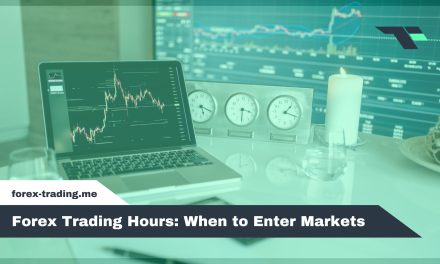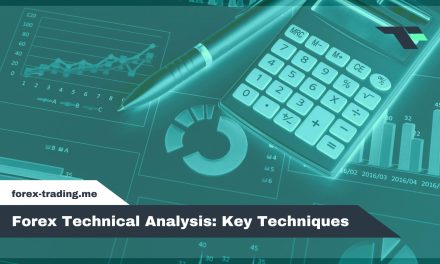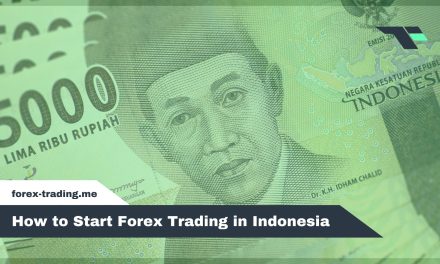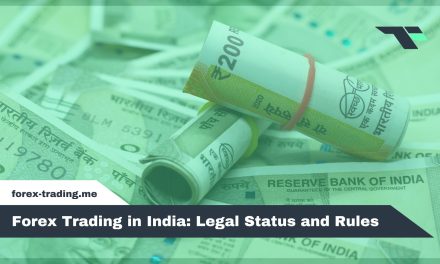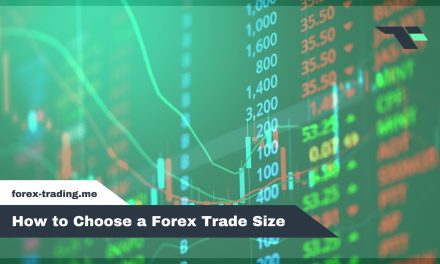
Forex Trading Account Types Explained
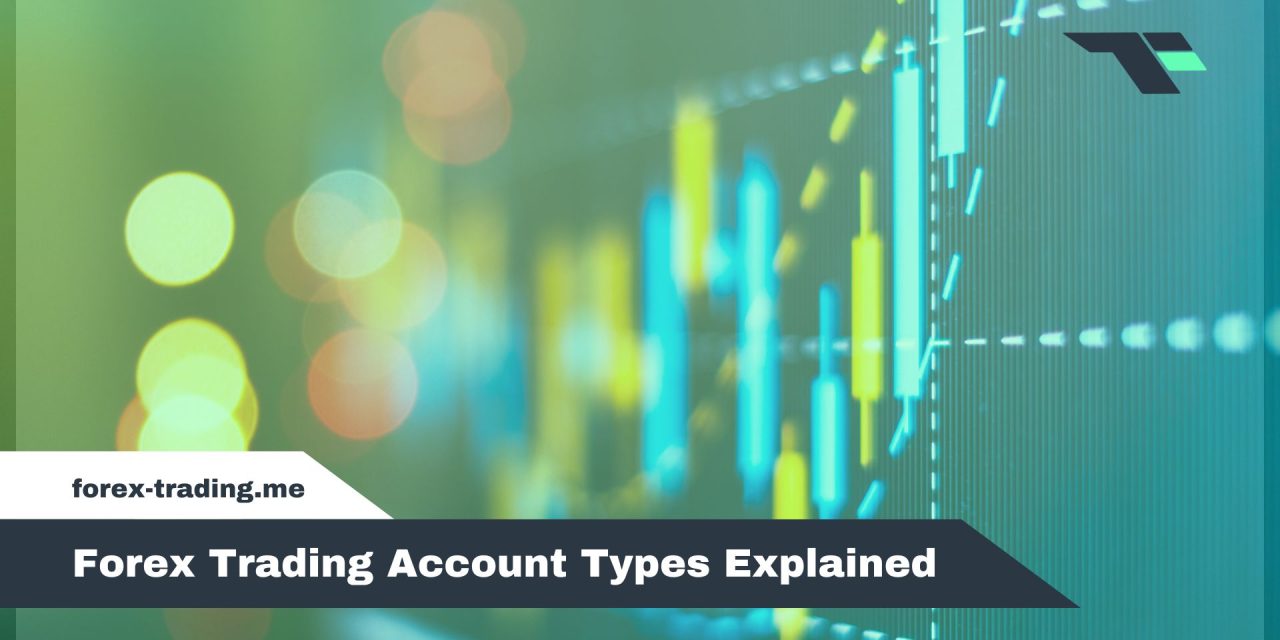
Forex trading accounts provide access to currency markets through various account types designed for different trader profiles. Standard accounts require $200 minimum deposits with 1.0 pip spreads, while micro accounts suit beginners with smaller lot sizes. ECN accounts offer institutional liquidity with 0.1 pip spreads plus commissions, and STP accounts feature wider spreads with transparent execution. VIP accounts cater to high-net-worth traders requiring $10,000-$20,000 deposits, offering tighter spreads and dedicated support. Understanding these distinctions helps traders select ideal account configurations for their specific needs.
Table of Contents
What is a Forex Trading Account?
A forex trading account serves as the gateway for individuals to participate in currency exchange markets, providing access to trading platforms where they can buy and sell currency pairs using real or virtual funds. The account opening process typically requires traders to complete Know Your Customer (KYC) verification, which involves submitting identification documents and financial information to comply with regulatory standards. Most brokers complete this verification within one to three business days, after which traders gain full access to their chosen account type and can begin executing trades on the platform.
Definition and trading essentials
When traders enter the foreign exchange market, they require a specialized gateway that enables currency transactions, and this portal manifests as a forex trading account. This digital platform serves as the foundation for executing currency trades, managing margin requirements, and monitoring position equity in real-time through an integrated trading dashboard.
A forex trading account maintains three critical components: trading balance, which represents available funds; trading equity, reflecting current account value including unrealized profits or losses; and margin requirements, determining the capital needed to open positions. The account facilitates position sizing calculations and leverage utilization, where standard lots equal 100,000 base currency units. Leverage ratios considerably impact margin usage, ranging from conservative 50:1 ratios in European markets to aggressive 500:1 ratios offered by offshore brokers, directly affecting trading capacity and risk exposure.
Account opening and KYC steps
Before traders can access these sophisticated trading mechanisms and leverage capabilities, they must navigate the regulatory gatekeeping process that governs account establishment. The Know Your Customer (KYC) process serves as the cornerstone of Anti-Money Laundering (AML) compliance, requiring thorough documentation to verify trader identity and residency status.
The standard broker registration procedure involves three essential components:
- Identity verification – submission of government-issued passport or national identification card
- Proof of residence – utility bill, bank statement, or official correspondence dated within three months
- Personal information – contact details, employment status, and trading experience assessment
Account verification timelines vary among platforms, though 85% of leading brokers complete KYC processing within two business days. This regulatory framework protects both traders and financial institutions while ensuring market integrity and compliance with international banking standards.
Below is a concise overview that brings together the core elements of a forex trading account—its essential components, leverage mechanics, and KYC requirements—so you can quickly reference what matters when setting up and managing your gateway to the currency markets.
| Aspect | Definition & Details | Why It Matters / Pro Tip |
|---|---|---|
| Trading Balance | Available cash in the account for opening new positions. | Keep sufficient balance to meet margin calls; monitor regularly to avoid forced liquidations. |
| Trading Equity | Total account value including unrealized profits or losses (Balance + Floating P/L). | Use equity to gauge overall performance; avoid overleveraging when equity drops. |
| Margin Requirements | Capital needed to open/maintain a position, determined by lot size and chosen leverage. | Selecting lower leverage (e.g., 50:1) reduces risk; higher leverage (up to 500:1) magnifies both gains and losses. |
| Leverage Ratios | Ratio of borrowed capital to account funds (e.g., 50:1 in EU, 500:1 offshore). | Understand regional limits—EU caps at 50:1 to protect new traders; offshore options carry higher risk. |
| Position Sizing | Calculation based on lot size (standard lot = 100,000 units) and margin needed. | Use micro or mini lots to manage risk during early trades; adjust lot size as equity grows. |
| KYC: Identity Verification | Submission of government-issued ID (passport or national ID) to confirm trader identity. | Ensure documents are clear and valid; avoid delays by providing up-to-date scans. |
| KYC: Proof of Residence | Valid utility bill, bank statement, or official letter dated within three months to confirm address. | Verify document dates—bills older than three months are usually rejected. |
| KYC: Personal Information | Contact details, employment status, and prior trading experience for AML compliance. | Be honest about trading history; misleading information can slow verification. |
| Typical KYC Timeline | 85% of leading brokers complete KYC within two business days (1–3 days is common). | Plan deposits and initial trades after 48 hours; track broker notifications closely. |
| Trading Dashboard | Interface that displays balance, equity, margin levels, and open positions in real time. | Get comfortable with your broker’s dashboard—set price alerts to react swiftly. |
This table distills the fundamentals—how your cash translates into buying power, the safeguards behind leverage, and the streamlined steps you’ll take to verify identity—so you can focus on what really matters: executing your first successful trades.
Types of Forex Trading Accounts
Forex brokers offer several distinct account types designed to accommodate different trading styles, experience levels, and capital requirements. Standard accounts serve as the primary option for most retail traders, while micro accounts provide accessibility for beginners with smaller deposits who want to trade reduced position sizes. Specialized account structures include ECN accounts that offer direct market access, STP accounts featuring straight-through processing, and swap-free accounts designed for traders who cannot hold positions overnight due to religious or personal restrictions.
Standard account for regular trading
Although many brokers offer multiple account tiers, the Standard account represents the most widely chosen option among retail forex traders due to its balanced approach to costs and accessibility. This classic account type typically requires moderate initial funding while providing competitive trading conditions without overwhelming complexity.
Standard accounts feature three key characteristics that appeal to regular traders:
- Minimum deposit requirements averaging $200, making entry accessible without substantial capital commitment
- Spreads starting at 1.0 pip on major pairs like EUR/USD, offering reasonable transaction costs
- Commission-free trading structure that simplifies cost calculations for position sizing
Most brokers design their Standard accounts with fixed or variable spreads, depending on market conditions. The straightforward fee structure eliminates commission calculations, allowing traders to focus on market analysis rather than complex cost accounting.
Micro account for small-lot trading
Accessibility defines the primary appeal of micro accounts, which enable traders to participate in forex markets with notably reduced capital requirements and position sizes. These accounts facilitate trading in micro-lots of 1,000 currency units, remarkably smaller than standard lots of 100,000 units. With 100:1 leverage, traders need only $10 margin per micro-lot, making entry barriers exceptionally low for beginners.
Micro accounts serve as effective stepping stones between demo trading and larger live positions. They allow novice traders to experience real market conditions while minimizing financial exposure and emotional pressure. The reduced position sizes enable gradual skill development and risk management learning without substantial capital loss.
Statistical data from 2025 reveals that 45% of all demo-to-live account conversions occurred through micro accounts, demonstrating their popularity among new traders seeking low-capital trading opportunities.
ECN account and ECN access
Electronic Communication Network (ECN) accounts represent a sophisticated trading infrastructure that connects traders directly to institutional liquidity providers, bypassing traditional market maker intermediaries. These accounts offer raw market spreads, typically ranging from 0.0 to 0.3 pips on major currency pairs, with EUR/USD averaging 0.1 pips during Q1 2025 among top brokers.
ECN accounts operate through commission-based pricing structures rather than spread markups, providing transparent cost visibility. Key characteristics include:
- Direct market access to interbank pricing from multiple liquidity providers
- Commission fees typically ranging from $5-$7 per standard lot per side
- Faster execution speeds due to automated order matching systems
While ECN accounts deliver competitive spreads and professional trading conditions, traders must consider higher commission costs and potential requotes during volatile market periods when selecting this account type.
STP account and straight-through processing
Straight-Through Processing (STP) accounts represent another no-dealing-desk execution model that routes client orders directly to liquidity providers, though they differ fundamentally from ECN accounts in their pricing structure and market access approach. Unlike ECN accounts that charge separate commissions, STP accounts incorporate broker mark-ups directly into the spread, creating a spread-based pricing model. This hybrid approach typically results in slightly wider spreads, with mid-tier brokers averaging 0.8 pips on USD/JPY including mark-ups. STP accounts generally access fewer liquidity tiers than ECN accounts, using liquidity bridges to connect with select providers. Despite these differences, STP models captured 25% of retail forex volumes in 2023, offering traders transparent market execution without dealing desk intervention while maintaining cost-effective pricing structures.
Swap-free no-swap account overview
While conventional forex accounts incorporate swap rates that either credit or debit traders’ positions held overnight, swap-free accounts eliminate these interest-based charges to comply with Islamic Sharia law principles. These accounts serve Muslim traders who require halal trading conditions, replacing traditional overnight interest with fixed administrative fees.
The cost structure differs considerably from standard accounts:
- Fixed fees replace variable swaps – Brokers charge $5-$10 per lot per night instead of fluctuating interest rates.
- Trading restrictions often apply – Many brokers prohibit scalping and hedging strategies on swap-free accounts.
- Account verification requirements – Traders typically must provide documentation confirming their Islamic faith.
Approximately 12% of retail forex traders request swap-free status, reflecting growing demand for Sharia-compliant trading solutions across global markets.
PAMM/MAM copy trading options
PAMM and MAM accounts represent a fundamental shift from individual trading to managed forex services, where investors allocate capital to experienced traders who execute strategies on their behalf. PAMM (Percentage Allocation Management Module) systems automatically distribute profits and losses proportionally across investor accounts based on their capital contribution. MAM (Multi-Account Manager) platforms offer more sophisticated allocation methods, allowing managers to customize lot sizes and risk distribution across multiple client accounts.
These managed accounts appeal to investors lacking trading expertise or time for market analysis. Performance fees typically range from 20-30% of generated profits, providing incentive alignment between managers and investors. Top PAMM managers averaged 18% annual returns in 2023, while major brokers managed over $1 billion in client equity through these programs by 2025, demonstrating growing confidence in professional fund management services.
VIP account and exclusive conditions
Elite status in forex trading opens a tier of premium account benefits designed specifically for high-net-worth individuals and institutional traders who maintain substantial deposits or generate significant trading volumes. VIP accounts typically require minimum deposits ranging from $10,000 to $20,000, granting access to enhanced trading conditions that standard accounts cannot match.
Premium account holders enjoy three key advantages:
- Tighter spreads – EUR/USD spreads can start at 0.2 pips compared to standard 1.5-2.0 pip spreads
- Dedicated account managers – Personal relationship managers provide customized support and market insights
- Priority processing – Faster withdrawal times and preferential execution on trades
Only 5% of active clients at top brokers qualify for VIP status, making these accounts exclusive territory for serious traders seeking competitive advantages in execution speed and cost efficiency.
To help you quickly compare each account’s core features, here’s a concise breakdown that highlights what sets these options apart and guides you toward the right choice for your trading style and capital.
| Account Type | Minimum Deposit | Typical Spread (Major Pairs) | Commission Structure | Leverage | Ideal For | Key Notes |
|---|---|---|---|---|---|---|
| Standard | ~$200 | From 1.0 pip | Commission-free (spread-based) | Up to 1:30 (EU), 1:100 (Offshore) | Regular retail traders | Balanced cost-accessibility; fixed or variable spreads |
| Micro | ~$50–$100 | 1.5–2.0 pips | Commission-free (spread-based) | Up to 1:100 (often higher offshore) | Beginners, low-capital traders | Trades in 1,000-unit lots; low barrier to entry |
| ECN | $500+ | From 0.0–0.3 pip (raw spread) | $5–$7 per standard lot per side | Up to 1:100 (depending on broker) | Professional, high-volume scalpers | Direct market access, fastest execution, transparent pricing |
| STP | $200–$500 | From 0.8 pip (with markup) | Spread-based (broker markup) | Up to 1:100–1:200 | Traders seeking a middle ground | No dealing desk; spreads include broker mark-up |
| Swap-Free | $200+ | From 1.0–1.5 pips (varies) | Fixed nightly admin fee ($5–$10) | Up to 1:30–1:100 (region-dependent) | Muslim traders, those avoiding swaps | Sharia-compliant; often prohibits scalping and hedging |
| PAMM/MAM | $500+ | Varies by master trader’s account | Profit-share (20–30% of gains) | Determined by manager’s allocation | Investors preferring managed accounts | Allows allocation to experienced traders; performance-based fees |
| VIP | $10,000+ | From 0.2–0.5 pip | Reduced commission or none | Up to 1:50 (varies by region) | High-net-worth or institutional traders | Dedicated manager, priority processing, exclusive market insights |
Forex Trading Demo Account Benefits
Demo accounts serve as essential training platforms that allow aspiring traders to practice forex strategies using virtual funds while experiencing real market conditions without financial risk. These simulated trading environments enable users to familiarize themselves with trading platforms, test various analytical approaches, and develop confidence in their decision-making abilities before moving to live capital. The risk-free nature of demo trading provides an invaluable opportunity for beginners to understand market dynamics, practice order execution, and refine their trading psychology without the pressure of potential monetary losses.
Virtual trading for risk-free practice
Nearly all forex brokers provide virtual trading environments that replicate live market conditions without requiring actual capital investment, enabling traders to develop essential skills through risk-free practice. Virtual funds mimic real capital behavior, allowing traders to execute simulated orders while accessing professional charting tools and technical indicators without emotional pressure from potential losses.
These test environments facilitate thorough skill development through:
- Platform familiarization – steering order entry systems, customizing chart layouts, and mastering execution tools
- Strategy testing – evaluating trading approaches across different market conditions and timeframes
- Risk management practice – implementing stop-losses, position sizing, and portfolio allocation techniques
Statistical analysis reveals that 70% of traders who spend at least 50 hours on demo accounts experience higher first-month retention when shifting to live trading, demonstrating virtual practice’s effectiveness in building sustainable trading foundations.
Demo account usage and benefits
The extensive benefits of forex trading demo accounts extend far beyond initial practice sessions, serving as sophisticated evaluation tools that enable traders to assess broker reliability, test automated systems, and validate complex strategies before committing real capital. These accounts enable thorough broker testing through execution speed analysis, slippage evaluation, and platform functionality assessment. Traders utilize demo environments for expert advisor testing, backtesting historical performance, and algorithm optimization without financial risk. In 2025, 68% of traders used demo accounts to test automated trading scripts before live deployment, recognizing their value in strategy validation and confidence building. Demo accounts also facilitate multi-timeframe analysis, risk management calibration, and psychological preparation for live market conditions, making them indispensable tools for both novice and experienced traders.
Below is a quick-reference summary to highlight why demo accounts are indispensable for traders at every level, showcasing key benefits, usage statistics, and practical tips to maximize virtual practice before trading live.
| Benefit Category | Key Advantage | Data & Practical Tip |
|---|---|---|
| Risk-Free Skill Building | Practice entry/exit, charting tools, and order types without real money at stake. | 70% of traders with ≥50 demo hours have higher first-month live retention—log at least 50 hours. |
| Platform & Broker Testing | Evaluate execution speed, slippage rates, and platform stability before committing funds. | Test 3 different brokers’ demo accounts to compare average slippage and order fill quality. |
| Strategy Validation | Backtest automated systems and manual strategies across varying market conditions using virtual funds. | 68% of traders tested EAs on demo in 2025—run scripts for 4 weeks before live deployment. |
| Risk Management Practice | Implement stop-loss, position-sizing, and portfolio allocation techniques in real-time simulations. | Practice setting stop-loss at 1–2% of equity per trade to reinforce disciplined risk limits. |
| Trading Psychology Prep | Build confidence and emotional control in a low-pressure environment, reducing fear-driven mistakes. | Keep a trading journal in demo: track emotions and decisions to identify patterns before going live. |
| Multi-Timeframe Analysis | Analyze charts across intraday, daily, and weekly timeframes to fine-tune technical setups. | Spend 10% of demo time on higher timeframes (4H, daily) to avoid overtrading in fast-moving markets. |
| Automated System Trials | Optimize algorithm parameters and perform stress tests without financial consequences. | Allocate 30% of demo sessions to EA optimization—adjust inputs and monitor performance metrics. |
Forex Trading Account Fees & Costs
Understanding the thorough cost structure of forex trading accounts is essential for selecting the most profitable option, as fees directly impact net returns and can vary considerably between account types. Trading costs encompass multiple components including spreads that represent the difference between bid and ask prices, commissions charged per transaction, and various operational fees that brokers impose for account maintenance and services. A thorough analysis of these fee structures, from basic transaction costs to less obvious charges like inactivity penalties, enables traders to make informed decisions that align with their trading frequency and capital requirements.
Spreads, commissions, and trading fees
Every forex trade carries costs that directly impact profitability, with spreads representing the most fundamental expense traders encounter across all account types. The bid-ask spread measures the difference between buying and selling prices, typically quoted in pips. Standard accounts incorporate markup into spreads, while ECN accounts separate raw spreads from commissions.
Trading costs vary markedly across account models:
- Standard accounts average 1.2 pips on GBP/USD, with broker markup embedded in spreads
- ECN accounts charge $6 commission per lot plus minimal pip cost, totaling approximately 0.8 pips on EUR/USD
- Premium accounts offer reduced spreads but require higher minimum deposits
Understanding per-lot commission structures helps traders calculate total trading expenses accurately. ECN models typically provide lower overall costs for active traders, while standard accounts offer simplicity for beginners despite higher pip costs.
Deposit, withdrawal, and funding costs
Beyond transaction costs, funding operations present another layer of expenses that can greatly erode trading capital if not carefully managed. Bank wire transfers typically incur $25 fees per transaction, while e-wallet withdrawals through platforms like Skrill or Neteller average $3 each. Brokers often establish minimum withdrawal thresholds, with many requiring $50 for bank transfers on live accounts.
Payment processing fees vary greatly between funding methods. Credit card deposits may carry percentage-based charges, whereas some brokers subsidize e-wallet deposits to encourage their use. Wire transfer costs can accumulate quickly for frequent transactions, making e-wallets more economical for smaller amounts. Account tiers sometimes influence these fees, with premium accounts receiving reduced or waived charges. Understanding each broker’s fee structure helps traders select cost-effective funding methods that align with their trading frequency and capital requirements.
Inactivity, hidden, and maintenance fees
Many brokers impose fees that activate during periods of account inactivity, creating unexpected costs for traders who step away from the markets for extended periods. These charges typically begin after 6 to 12 months of dormancy, ranging from $10 to $30 monthly until the account balance depletes or trading resumes.
Statistics reveal that up to 30% of retail accounts at some brokers incur inactivity fees within two years of no trading. Additional maintenance costs often surface through premium platform subscriptions, with advanced charting software adding $15 monthly expenses.
Common hidden fees include:
- Account dormancy charges – Monthly deductions after extended inactivity periods
- Platform subscription fees – Costs for enhanced trading tools and advanced analytics
- Service maintenance charges – Administrative fees for account upkeep and customer support access
Traders should review fee schedules carefully before opening accounts.
Building on the detailed breakdown above, the following table distills each cost category into clear figures and actionable tips, so you can pinpoint expenses and strategically minimize them before they eat into your trading profits.
| Cost Category | Typical Expense | Real-World Example | Pro Tip to Minimize |
|---|---|---|---|
| Spreads | 1.2 pips (GBP/USD, standard) 0.8 pips equivalent (EUR/USD, ECN) | Standard: $12 per 1-lot round trip ECN: $8 per 1-lot round trip | Compare average spreads daily and switch to ECN if your monthly volume exceeds 50 lots |
| Commissions | $6–$7 per standard lot (ECN) | $6 × 100 lots = $600 monthly commission for active traders | Consolidate trades into larger positions to reduce per-lot commission burden |
| Deposit/Withdrawal Fees | Bank wire: $25 per transfer E-wallet: $3 per withdrawal | 4 wire transfers = $100 per month 10 e-wallet withdrawals = $30 | Use e-wallets for deposits under $1,000 and limit wire transfers to once per month |
| Credit Card Processing | 1.5%–3% of deposit amount | $1,000 deposit = $20 fee (2%) | Opt for brokers that subsidize card fees or reimburse fees for premium accounts |
| Inactivity Fees | $10–$30 per month after 6–12 months dormancy | Dormant account for 8 months = $80–$240 | Log in at least once every quarter or transfer a small trade to reset dormancy timer |
| Platform Subscription Fees | $15 per month for advanced charting or analytics | Enhanced charting package = $180 annually | Leverage free built-in tools on MT4/MT5 before upgrading to paid subscriptions |
| Hidden Service/Maintenance Fees | $5–$10 administrative charges per month | Customer support fee = $7/month | Review broker’s full fee schedule and negotiate lower fees when opening a higher-tier account |
Forex Trading Account Base Currency Options
Selecting the appropriate base currency for a trading account considerably impacts deposit and withdrawal conversion costs, with currency exchanges potentially adding 0.5 to 1.0 percent per transaction when converting between major currencies like USD and EUR. While 40 percent of traders prefer USD-denominated accounts and 25 percent choose EUR accounts according to 2025 surveys, the choice affects margin calculations and profit reporting methods. Multi-currency trading accounts provide enhanced flexibility by allowing traders to hold multiple currencies simultaneously, reducing conversion fees and enabling more efficient management of positions across different currency pairs.
Choosing base currency for lower costs
Currency conversion fees represent a hidden cost that can greatly erode trading profits over time, particularly for traders whose local currency differs from their broker’s available base account currencies. These charges accumulate with every deposit and withdrawal, creating an unnecessary financial drain that smart account selection can minimize.
Consider these cost-reduction strategies when selecting your base currency:
- Match your home currency – A GBP-based trader using USD accounts faces approximately 0.5% conversion fees per transaction
- Select multi-currency brokers – These platforms can reduce conversion costs by up to 70% compared to single-currency options
- Calculate long-term impact – Frequent deposits multiply these fees, making currency alignment essential for active traders
Brokers offering multi-currency base accounts provide flexibility while substantially reducing FX conversion charges and transfer fees.
Multi-currency account advantages
While traditional single-currency accounts force traders through costly conversions at every funding transaction, multi-currency accounts enable seamless management of multiple base currencies within a unified trading platform. These accounts function as currency wallets, allowing traders to deposit, withdraw, and hold funds in various currencies without automatic conversion requirements. The growth in popularity reflects their practical benefits: 28% of global brokers offered multi-currency accounts in 2025, up from 15% in 2022. Traders using multi-currency wallets saved an average of $120 per month on conversion fees by eliminating repeated currency exchanges. This flexible funding approach particularly benefits international traders managing diverse income streams or those seeking FX diversification across their account holdings, streamlining both wallet management and accounting processes.
To put these savings into perspective and help you decide on the optimal base currency strategy, consider the key factors, potential cost reductions, and actionable tips outlined below.
| Strategy / Feature | Benefit / Description | Data & Tip |
|---|---|---|
| Match Home Currency | Eliminates conversion fees on deposits and withdrawals when your account and local currency align | GBP-to-USD conversions cost ~0.5% per transaction—avoid by choosing GBP if that’s your home currency |
| Select Multi-Currency Broker | Allows holding several currencies, reducing repeated conversion charges | 28% of brokers offered multi-currency accounts in 2025—compare providers to find the lowest fees |
| Calculate Long-Term Impact | Helps project cumulative cost savings over multiple transactions | Active traders depositing monthly could save over 1% per trade, adding up to hundreds per year |
| FX Conversion Fee Example | Demonstrates real-world cost to highlight importance of currency alignment | A $10,000 deposit into a different-currency account can incur $50–$100 in conversion fees |
| Multi-Currency Wallet Functionality | Enables seamless transfers and position management across currencies without auto-conversion | Users saved an average of $120/month in 2025 by avoiding needless exchanges—optimize your wallet mix |
| Leverage & Margin Calculations | Base currency choice affects required margin and P/L reporting | USD-based margin for EUR/USD differs slightly from EUR-based margin—run sample trades to compare |
| International Trader Flexibility | Simplifies accounting and streamlines management for those with diverse income sources | Use multi-currency accounts to consolidate earnings in USD, EUR, GBP without incurring extra fees |
| Broker Comparison Criteria | Guides selection based on conversion fees, available currencies, and platform integrations | Create a shortlist of 3 brokers, compare their base currency options, and prioritize lowest FX fees |
Forex Trading Account Platforms & Tools
The choice of trading platform greatly influences which account types a broker supports and determines the available features such as order execution methods, charting capabilities, and automated trading options. MetaTrader 4 maintains widespread adoption with 85% of brokers offering it across all account categories, while MetaTrader 5 has reached 60% broker adoption as of Q1 2025, providing enhanced functionality for modern trading strategies. Alternative platforms like cTrader, utilized by 35% of ECN brokers, and proprietary broker software often cater to specific account models with specialized tools and execution technologies.
MetaTrader 4/5 support for account types
Nearly 95% of Standard and Micro accounts operate on MetaTrader 4, while ECN and institutional account holders increasingly favor MetaTrader 5‘s enhanced capabilities. Platform compatibility varies greatly based on account type and broker infrastructure. MT4 remains the preferred choice for basic trading needs, offering reliable Expert Advisor execution and familiar interface design. However, 70% of ECN brokers migrated to MT5 by 2025, seeking advanced features for sophisticated trading strategies.
Key platform differences across account types include:
- Timeframe availability: MT5 provides 21 timeframes versus MT4’s 9, enabling more precise strategy testing for premium accounts
- Order execution: ECN accounts leverage MT5’s improved market depth and faster processing speeds
- Automated trading: Both platforms support custom indicators and MQL5 scripts, though institutional accounts receive priority server allocation
cTrader and proprietary platform features
Advanced trading platforms beyond MetaTrader have gained significant traction among ECN and institutional account holders seeking enhanced market access and analytical capabilities. cTrader emerged as a leading alternative, with 42% of ECN accounts globally offering this platform in 2025, primarily due to its direct market access features and sophisticated order execution algorithms.
cTrader accounts provide Level II pricing transparency, enabling traders to view market depth and liquidity provider orders directly. The platform’s integrated cAlgo scripting environment allows algorithmic trading development without external programming tools. Many ECN brokers favor cTrader for its institutional-grade execution and reduced latency.
Proprietary platforms increasingly compete by incorporating social trading tools, custom analytics, and mobile integrations. Brokers offering proprietary platforms with built-in social features attracted 18% more active users compared to MT4-only providers, demonstrating traders’ preference for extensive trading ecosystems.
Below is a streamlined comparison to help you evaluate which trading platform best aligns with your chosen account type and trading objectives. Use this as a quick reference to match platform features with your strategy needs.
| Platform | Adoption & Compatibility | Key Features | Best Suited For | Pro Tip |
|---|---|---|---|---|
| MetaTrader 4 | 85% of brokers; 95% of Standard & Micro accounts | 9 timeframes, reliable Expert Advisor execution, familiar layout | Newer traders, basic trading needs | Ideal for mastering fundamentals—leverage free built-in indicators before upgrading |
| MetaTrader 5 | 60% of brokers; 70% of ECN brokers by Q1 2025 | 21 timeframes, improved market depth, faster order processing | ECN, institutional, advanced strategies | Test multi-timeframe approaches on MT5’s extra timeframes for precise entries |
| cTrader | 35% of ECN brokers use it; 42% of ECN accounts | Level II pricing, market depth visibility, cAlgo scripting | ECN traders, algorithmic strategies | Use cAlgo to build and backtest custom algorithms without external tools |
| Proprietary | Varies by broker; 18% higher engagement than MT4-only | Social trading integration, custom analytics, mobile features | Traders seeking holistic ecosystem | Look for platforms offering built-in social signals and mobile alerts to stay informed on the move |
Forex Trading Account Security Measures
Security measures form a critical foundation for forex trading accounts, with brokers implementing multiple layers of protection to safeguard client funds and personal information. Regulated brokers typically maintain segregated bank accounts to separate client deposits from operational funds, while negative balance protection prevents traders from owing money beyond their account balance. Additional security protocols include two-factor authentication for account access and SSL encryption technology to protect sensitive data during transmission between traders and broker platforms.
Segregated accounts and negative balance protection
The financial architecture of forex trading accounts incorporates two fundamental security mechanisms that protect traders from institutional failure and excessive market exposure: segregated accounts and negative balance protection. Client fund segregation requires brokers to maintain trader deposits separate from operational funds, ensuring money remains accessible even during broker insolvency. This regulatory requirement creates a protective barrier between client capital and business operations.
Key protective features include:
- Segregated Holdings: Client deposits stored in separate bank accounts, isolated from broker’s operational funds
- Negative Balance Protection: Automatic account closure at zero equity, preventing traders from owing additional money
- Regulatory Oversight: Tier-1 brokers must comply with strict fund separation requirements under financial authorities
During 2020’s market crash, brokers with negative balance protection absorbed $500 million in client losses. Currently, 90% of Tier-1 brokers provide this protection across all live account types.
Two-factor authentication and SSL encryption
Vigilance against cyber threats requires forex traders to implement robust authentication protocols that extend far beyond traditional password protection. Two-factor authentication (2FA) serves as a critical security layer, requiring users to verify their identity through SMS codes or authenticator applications alongside standard login credentials. Data from 2023 demonstrates that brokers implementing mandatory 2FA experienced a 65% reduction in unauthorized access attempts, highlighting its effectiveness against security breaches.
SSL encryption complements 2FA by securing data transmission between traders and brokers. All regulated brokers encrypt data channels using 128-bit or higher SSL certificates, ensuring that sensitive information remains protected during transmission. Traders should verify that their chosen broker employs both security measures, as these features vary greatly across platforms and directly impact account safety.
Below is a concise breakdown of the essential security layers brokers employ to protect your funds and data, plus practical pointers to ensure you’re trading within a fortified environment.
| Security Measure | What It Does | Benefit & Pro Tip |
|---|---|---|
| Segregated Bank Accounts | Keeps client deposits separate from broker operating funds | Ensures your capital remains protected if the broker faces insolvency—confirm segregation status before funding. |
| Negative Balance Protection | Automatically closes positions at zero equity to prevent a negative account balance | Prevents unexpected debts during extreme market moves—verify this safeguard is active on all live account types. |
| Regulatory Oversight | Requires Tier-1 brokers to comply with strict fund separation and regular audits | Trading with an FCA- or ASIC-regulated broker means added transparency—look up license numbers to confirm compliance. |
| Two-Factor Authentication (2FA) | Adds a second verification step via SMS or authenticator app alongside your password | Reduces unauthorized access attempts by 65%—enable 2FA immediately and use an authenticator app for strongest security. |
| SSL Encryption (128-bit or higher) | Encrypts data transmitted between your device and the broker’s servers | Protects login credentials and trade details from interception—check for “https://” and the padlock icon on the login page. |
Forex Trading Account Funding Methods
Once traders select an appropriate forex account type, they must choose from various funding methods that differ considerably in processing times and associated costs. Bank transfers remain the most traditional option, typically requiring 1-3 business days for completion, while e-wallets like Skrill and Neteller offer instant deposits with varying fee structures. Modern brokers increasingly support cryptocurrency deposits, which can clear within an hour but may involve network fees ranging from 0.5% to 1% of the transaction amount.
Bank transfer, e-wallets, and crypto options
Several funding methods exist for forex trading accounts, each offering distinct advantages and drawbacks regarding cost, processing speed, and accessibility.
Bank transfers represent the traditional approach, though they typically carry substantial fees averaging $25 per transaction and slower processing times. E-wallets like Skrill provide faster processing but charge percentage-based fees, with Skrill specifically charging 1.45% on deposits. Cryptocurrency funding has gained significant traction, with usage increasing from 5% in 2022 to 12% in 2025, offering lower fees but introducing price volatility concerns.
The three primary considerations when selecting funding methods include:
- Transaction costs – comparing fixed fees versus percentage-based charges
- Processing speed – evaluating same-day versus multi-day settlement
- Accessibility – determining regional availability and regulatory compliance requirements
Transaction times and fees comparison
When evaluating funding methods for forex trading accounts, transaction speed and associated costs emerge as critical factors that directly impact trading efficiency and profitability. E-wallet withdrawals typically complete within 24 hours, offering traders relatively quick access to their funds, while traditional bank transfers require 2-5 business days for processing. Cryptocurrency transactions provide the fastest option, completing in 30-60 minutes with average fees of 0.0005 BTC per transaction. Bank transfers often carry higher fees but offer stability and regulatory protection. E-wallets balance speed with moderate costs, making them popular among active traders. Traders should consider their capital deployment timeline when selecting funding methods, as faster processing enables quicker response to market opportunities but may involve higher transaction costs.
Below is a streamlined comparison to help you evaluate the most efficient and cost-effective way to fund your forex account, ensuring you can act on market opportunities without wasting capital on avoidable charges.
| Funding Method | Processing Time | Fee Structure | Key Considerations | Pro Tip |
|---|---|---|---|---|
| Bank Transfer | 1–3 business days for deposits; 2–5 days for withdrawals | Flat $25 per transaction | Reliable and secure; higher fees; slower turnaround | Combine larger transfers into a single wire to reduce frequency fees |
| E-Wallet (Skrill, Neteller) | Instant to 24 hours | 1.45% on deposits; ~$3 per withdrawal | Quick access; moderate percentage fees; widely accepted | Use e-wallets for deposits under $1,000 to avoid high wire fees |
| Credit/Debit Card | Instant | 1.5%–3% of deposit amount | Fastest deposit method; fees vary by broker | Look for brokers that reimburse card fees for premium accounts |
| Cryptocurrency | 30–60 minutes | 0.5%–1.0% network fee; ~0.0005 BTC average | Fastest settlements; potential price volatility; regulatory caveats | Fund during low network congestion to minimize BTC fees |
Forex Trading Account Mobile Access
Modern forex brokers provide mobile trading applications that allow account holders to access both live and demo accounts from smartphones and tablets, with MT4, MT5, and cTrader being the most widely adopted platforms. The functionality of these mobile apps varies considerably between account types, as live accounts typically offer full trading capabilities while demo accounts may restrict certain advanced features like extensive backtesting tools. Statistics indicate that 72% of forex traders utilized mobile applications at least weekly in 2025, though 60% of demo account users still prefer desktop platforms when conducting thorough strategy testing due to mobile limitations.
Mobile trading app features for live and demo
Most forex brokers now provide mobile trading applications that offer both live and demo account access, though the functionality often varies markedly between account types and trading platforms. Standard and Micro account holders frequently utilize mobile platforms, with 85% trading via MT4 mobile applications. However, ECN users show less mobile adoption, with only 30% trading regularly through mobile devices.
Mobile applications typically preserve essential trading functions while restricting advanced capabilities:
- Core Features: Price charts, basic indicators, order execution, and account management remain fully functional across live and demo accounts
- Enhanced Tools: Push notifications, one-click trading, and mobile-optimized indicators improve accessibility for standard account types
- Limitations: Advanced expert advisors, custom scripts, and complex analytical tools are often unavailable on mobile platforms
These restrictions particularly affect professional traders who require sophisticated automation and analysis capabilities.
Limitations of mobile demo accounts
Mobile demo accounts frequently present significant limitations that can mislead traders about actual market conditions and platform capabilities. These mobile simulations often lack essential testing features like Strategy Tester, which desktop versions provide for thorough backtesting analysis. Market condition simulations prove less accurate on mobile platforms, creating unrealistic expectations about execution speeds and pricing accuracy.
Research indicates that 40% of traders reported slippage discrepancies between mobile demo and desktop demo environments in 2023, highlighting significant performance variations across platforms. Mobile demo environments may not accurately reflect real-world slippage patterns, spreads, or execution delays that traders encounter during live trading sessions.
Traders should periodically verify their strategies using desktop demo accounts to confirm thorough testing and realistic market simulation before moving to live trading environments.
Here’s a concise comparison that highlights how mobile apps serve live and demo accounts, so you can weigh convenience against functionality before deciding where to spend most of your trading time.
| Feature | Live Accounts | Demo Accounts | Limitations on Mobile | Key Data / Tip |
|---|---|---|---|---|
| Core Functionality | Full order entry, real-time charts, and account management | Same basic order entry and charts | Cannot backtest or run complex scripts | 72 % of traders used mobile at least weekly in 2025 |
| Platform Availability | MT4, MT5, cTrader with push notifications and one-click trading | MT4 and MT5 mobile with basic charting tools | Strategy Tester unavailable | 85 % of Standard/Micro traders trade via MT4 mobile |
| Advanced Tools | Limited to mobile-optimized indicators and alerts | No access to Strategy Tester or custom EAs | No custom scripting or in-depth analysis tools | Only 30 % of ECN users trade on mobile regularly |
| Execution Accuracy | Real-time prices mirror desktop performance | Simulations may not reflect true slippage or spreads | Slippage discrepancies compared to desktop | 40 % reported mobile demo slippage issues in 2023 |
| Usability Considerations | Ideal for managing open positions and quick trades | Good for basic practice but misleading for detailed testing | Lacks desktop-level analysis; may foster overconfidence | Verify strategies on desktop demo before going live |
Forex Trading Account Educational Resources
Educational resources vary considerably across different forex trading account types, with premium and VIP accounts typically offering exclusive access to monthly market analysis webinars, personalized tutorials, and dedicated account managers. Demo accounts serve as the primary educational foundation for beginners, providing risk-free environments to practice trading strategies and learn platform functionality before shifting to live trading. Brokers that provide thorough educational support through free demo tutorials have demonstrated measurably higher conversion rates, with data showing a 22% increase in traders moving from demo to live accounts.
Webinars, tutorials, and personal manager access
The educational resources available to forex traders vary considerably based on account type and deposit level, with higher-tier accounts typically receiving more personalized support. Standard account holders typically access generic video libraries and group webinars, while VIP clients receive dedicated coaching sessions. Research indicates that 33% of brokers assign personal account managers exclusively to deposits exceeding $5,000, creating a clear distinction in support quality.
The educational support structure generally follows this hierarchy:
- Basic accounts: Access to pre-recorded video tutorials and monthly group webinars covering fundamental trading concepts
- Premium accounts: Weekly live training sessions, strategy guides, and priority access to market analysis webinars
- VIP accounts: One-on-one coaching sessions, personal account manager access, and customized educational content
Statistics show that beginner traders attending at least three webinars during their initial month achieve 15% higher win rates, emphasizing the value of thorough educational support.
Demo account as educational tool for beginners
Demo-account functionality serves as the foundational training ground where novice traders develop essential skills without risking actual capital, bridging the gap between theoretical knowledge and practical application. These simulated learning environments provide extensive practice tutorials covering chart patterns, order types, and risk controls through interactive trading drills. Modern brokers integrate guided demo systems with structured educational pathways, allowing beginners to master essential concepts systematically. Statistical data reveals that 65% of new traders complete at least ten guided demo tutorials before moving to live trading in 2025, demonstrating the effectiveness of this practice environment. Demo accounts replicate real market conditions using virtual funds, enabling traders to test strategies, understand platform mechanics, and build confidence before committing actual money to forex markets.
Below is a streamlined overview of how brokers structure their educational support across account tiers, highlighting key features, impact metrics, and actionable tips to maximize your learning journey.
| Resource Type | Account Level | Key Features | Impact & Pro Tip |
|---|---|---|---|
| Video Libraries | Basic Accounts | Pre-recorded tutorials on platform basics, chart patterns, and order types | Traders with access to at least five foundational videos complete faster setup—watch 3 per week to build momentum |
| Group Webinars | Basic & Premium | Monthly live sessions covering market fundamentals and current trends | Attending three webinars in the first month correlates with a 15% higher live win rate—mark your calendar early |
| Live Training Sessions | Premium Accounts | Weekly interactive workshops on strategy development and risk management | Participants report 20% faster skill improvement—schedule one session per week to stay on track |
| Strategy Guides | Premium Accounts | Written playbooks and step-by-step frameworks for technical and fundamental analysis | Use guides to refine your edge—apply one new strategy per demo week and track performance |
| Personal Account Manager | VIP Accounts | One-on-one coaching, tailored feedback, and market insight calls | Personalized advice can boost confidence—book biweekly check-ins to review progress |
| Guided Demo Tutorials | Demo Accounts | Structured learning paths with interactive drills on order execution and risk controls | Completing ten guided modules before going live increases success rates—aim for two modules every few days |
| Market Analysis Webinars | Premium & VIP | In-depth monthly analysis, live Q&A, and exclusive outlook reports | Early access to insights helps refine trades—apply one analyst tip per trading week to test real-time performance |
Forex Trading Account Regulatory Considerations
Regulatory oversight greatly influences the types of trading accounts that brokers can offer, with different licensing jurisdictions imposing varying requirements on leverage limits, client fund protection, and account features. European regulators like the FCA and CySEC implemented stricter leverage caps of 30:1 for major currency pairs in 2018, while offshore brokers in less regulated environments may still offer leverage ratios exceeding 500:1. These regulatory differences create distinct account ecosystems, where traders must weigh the enhanced consumer protections of regulated brokers against the potentially higher leverage and flexible account options available through offshore providers.
Broker licenses: EU, Asia, offshore comparison
Jurisdiction selection fundamentally shapes every aspect of a forex trading account, from maximum leverage ratios to mandatory client protections. Regulatory frameworks vary considerably across regions, creating distinct trading environments for retail and professional clients.
European Union and UK brokers operate under stringent oversight, implementing thorough consumer safeguards that limit potential losses while restricting trading flexibility. Asian regulators typically balance protection with market access, while offshore jurisdictions prioritize competitive advantages through relaxed restrictions.
Key regulatory differences include:
- Leverage limits: EU/UK capped at 1:30, Australia at 1:50, offshore reaching 1:500
- Negative balance protection: Mandatory in EU since 2018, optional in many offshore territories
- Compliance requirements: ESMA guidelines versus minimal regulatory oversight
These variations directly influence account features, costs, and available instruments, making jurisdiction selection essential for aligning regulatory environment with individual trading objectives and risk tolerance.
Impact of regulations on account features
While brokers design account types to attract diverse trading preferences, regulatory frameworks ultimately determine which features can be legally offered to clients in specific jurisdictions. European Securities and Markets Authority (ESMA) regulations implemented in 2018 greatly restricted leverage ratios and introduced mandatory margin call policies, resulting in Standard account spreads increasing by an average of 15% as brokers adjusted their cost structures. These consumer safeguards limit maximum leverage to 30:1 for major currency pairs and require negative balance protection for retail clients. Additionally, swap-free accounts remain unavailable in many regions, as they can only be offered through brokers regulated in jurisdictions that explicitly permit Sharia-compliant financial products. Consequently, traders must verify their local regulatory environment before selecting account types, as available features vary considerably based on licensing jurisdiction and applicable client protection measures.
Below is a quick-reference comparison of how regulatory environments shape account features, costs, and protections—so you can align your choice of broker and account type with the safeguards and flexibility you need.
| Jurisdiction | Leverage & Margin Limits | Consumer Protections | Account Features Impact | Pro Tip |
|---|---|---|---|---|
| EU / UK | Capped at 1:30 for major pairs; 1:20 for minors | Mandatory negative balance protection; strict KYC and AML rules | Standard and Micro accounts have tighter spreads (≈15% higher post-ESMA); swap-free accounts available under Sharia-permitting licenses | Verify FCA/CySEC registration to ensure these protections; expect tighter cost structures |
| Asia (e.g., ASIC) | Up to 1:50 for major pairs; 1:20 for minors | Negative balance protection required; robust complaint mechanisms | Slightly wider spreads than EU to offset leverage; swap-free accounts vary by broker; professional client options may unlock higher leverage | Check ASIC license status and compare ASIC vs. FCA spread offerings before opening an account |
| Offshore | Up to 1:500 or higher depending on broker | Minimal regulatory oversight; negative balance protection often optional | ECN/STP accounts may offer raw spreads and higher leverage; swap-free accounts more widely available but with limited dispute recourse | Research broker’s reputation and look for independent audits—higher leverage comes with greater risk |
Forex Trading Account Tax Implications
Forex traders must understand that tax obligations differ markedly between demo and live trading accounts, as demo accounts generate no taxable income while profits from live accounts typically constitute taxable capital gains or ordinary income depending on jurisdiction and account classification. In the United States, forex gains are taxed either as ordinary income under Section 988 accounts or under blended rates for Section 1256 contracts, where 60% receives long-term capital gains treatment and 40% is taxed at short-term rates. Detailed broker statements become essential documentation for accurate tax preparation, with 55% of UK traders relying on these records when filing returns with HMRC.
Tax reporting for demo versus live accounts
The distinction between demo and live trading accounts creates fundamentally different tax obligations that traders must understand before shifting from practice to real-money trading. Demo accounts involve simulated transactions with virtual currency, generating no actual profits or losses, which means these activities remain completely tax-exempt regardless of trading performance. Live accounts, however, produce real financial outcomes that trigger taxable events requiring proper documentation and reporting.
Key tax reporting differences include:
- Demo accounts: No tax implications since virtual profits and losses don’t constitute actual income or capital gains
- Live accounts: All realized profits must be reported as taxable income or capital gains based on jurisdiction
- Documentation requirements: Live traders must maintain detailed records while demo activity requires no tax documentation
In Germany, live forex profits face 25% capital gains taxation plus solidarity surcharge when positions close.
Broker statements and tax preparation
Once traders begin operating live accounts with real financial consequences, their brokers become indispensable partners in maintaining accurate tax records through thorough trading statements. Approximately 80% of regulated brokers issue downloadable PDF statements covering all trades and fees, providing complete documentation for tax preparation. These broker P/L statements typically include year-end summaries, profit/loss ledgers, and detailed transaction histories that tax authorities require.
Traders who maintain detailed P/L logs alongside broker documentation report 30% fewer audit discrepancies, demonstrating the importance of cross-referencing broker statements with personal trading journals. The statements also itemize deductible expenses such as spreads, commissions, and overnight financing charges. Proper organization of these documents guarantees compliance while maximizing legitimate tax deductions available to forex traders.
Below is a quick-reference overview to help you understand the contrasting tax treatments between demo and live forex accounts, along with practical tips to ensure accurate reporting and maximize allowable deductions.
| Aspect | Demo Accounts | Live Accounts | Pro Tip |
|---|---|---|---|
| Tax Obligation | No taxable events—virtual profits and losses are not recognized as income | Profits must be reported as taxable income or capital gains, depending on jurisdiction and account classification | Confirm local tax rules before switching to live trading to avoid surprises |
| Reporting Requirements | No documentation needed—demo activity ignored by tax authorities | Detailed broker statements and P/L logs are required to substantiate gains, losses, and deductible expenses | Download PDF statements monthly and reconcile with your personal journal to reduce audit discrepancies by 30% |
| U.S. Tax Treatment | N/A | Section 988: taxable as ordinary income Section 1256: 60% long-term/40% short-term capital gains | Elect Section 1256 treatment if you anticipate net gains to benefit from blended capital gains rates |
| European Tax Treatment | N/A | Germany: 25% capital gains tax + solidarity surcharge upon closing positions UK: report via HMRC using broker statements | In the UK, ensure your broker provides a year-end summary—55% of UK traders rely on these for HMRC filings |
| Deductible Expenses | Not applicable | Spreads, commissions, overnight financing, and platform fees can be deducted to lower taxable income | Track all transaction fees and financing charges in your trading journal to maximize legitimate deductions |
| Record-Keeping | No records required for tax purposes | Maintain a complete archive of monthly and year-end statements, trade confirmations, and personal P/L logs for at least five years | Use cloud storage for easy access to statements and journals—organize files by year to streamline tax season |
Forex Trading Account Risk Management
Successful forex trading requires robust risk management tools that vary greatly across different account types, with each offering distinct protective mechanisms and threshold settings. Stop-loss orders, take-profit commands, and trailing stops serve as automated safeguards that help traders limit losses and secure profits, while margin call systems activate when account equity falls below predetermined levels—typically 50% for Standard accounts and 30% for ECN accounts. Understanding these risk controls becomes essential since proper stop-loss implementation alone reduces average drawdown by 50% compared to traders who forgo these protective measures, making account selection vital for aligning risk tolerance with available safety features.
Stop-loss, take-profit, and trailing stops
While manual position monitoring remains common among new traders, automated risk management tools like stop-loss, take-profit, and trailing stops have become essential features that distinguish professional trading approaches across different forex account types.
These order execution mechanisms vary considerably between account structures. ECN accounts demonstrate superior precision, with 90% executing stop-loss orders within ±1 pip of requested prices, while market makers may show wider spreads during volatile conditions.
The three primary automated risk control tools include:
- Stop-loss orders – automatically close losing positions at predetermined price levels
- Take-profit orders – secure gains when currency pairs reach target prices
- Trailing stops – dynamically adjust stop levels following favorable price movements
Research indicates traders utilizing trailing stop features increased average net profits by 12% in 2025 studies, demonstrating how proper automated exit strategies enhance overall trading performance across various account types.
Margin calls and risk settings overview
Margin calls represent critical risk management mechanisms that activate when a trader’s account equity drops below the broker’s required maintenance levels, with specific thresholds varying markedly across different forex account types. Standard accounts typically implement margin call warnings at 100% equity levels, followed by automatic position closure at 50% stop-out thresholds. ECN accounts often feature more aggressive risk parameters, with stop-out levels potentially occurring at 30% equity ratios, reflecting their professional trading environment.
These margin requirements protect both traders and brokers from excessive losses during volatile market conditions. When free margin approaches zero, brokers calculate the equity ratio against open positions to determine margin level percentages. Understanding these margin thresholds proves essential for effective risk management, as different account types impose varying margin requirements that directly impact trading strategies and position sizing decisions.
Building on the importance of safeguarding your capital, the following comparison helps you navigate key risk management tools and margin parameters across account types so you can match your risk tolerance with the right protective features.
| Risk Management Tool | Functionality & Benefit | Account Type Implications | Pro Tip / Data |
|---|---|---|---|
| Stop-Loss Orders | Automatically closes positions at a preset price to cap losses | ECN accounts execute within ±1 pip; market maker spreads may widen under volatility | Use ECN accounts for tighter SL precision—90% execute within ±1 pip, reducing slippage risk |
| Take-Profit Orders | Locks in gains when price reaches a target level | Available on all account types; standard accounts may see slower execution under high volatility | Set TP at realistic resistance levels to secure profits without premature exits |
| Trailing Stops | Adjusts stop level as price moves favorably, locking in incremental gains | Widely supported, but precision varies—ECN offers most reliable execution | Traders using trailing stops saw 12% higher net profits in 2025; activate on trending pairs |
| Margin Call Threshold | Warning issued when equity falls to 100% of required margin (Standard) or customizable (ECN) | Standard accounts warn at 100%; ECN may use dynamic thresholds based on liquidity | Monitor free margin so you never drop below 100% equity on Standard accounts to avoid liquidations |
| Stop-Out Level | Automatic position closure when equity reaches 50% (Standard) or 30% (ECN) | Tighter ECN stop-out (30%) forces quicker liquidations; Standard provides more buffer (50%) | Maintain equity above 60% to avoid stop-out on ECN, and above 70% for extra safety on Standard |
| Position Sizing Guidance | Calculating lot sizes based on risk percentage and account equity to control exposure | Smaller lot sizes in micro or standard accounts help limit drawdowns | Risk no more than 1–2% of equity per trade—use micro lots to adhere to strict risk parameters |
| Automated Risk Settings | Built-in platform features like alert thresholds and risk calculators | Advanced platforms (MT5, cTrader) offer built-in calculators; basic apps may lack tools | Leverage platform calculators to test risk scenarios before opening new positions |
Forex Trading Account Stats & Trends
Recent market data reveals significant shifts in forex account preferences and registration patterns across different trader segments. Live account openings surged by 28% in 2025, substantially outpacing the 15% growth in demo account registrations, indicating increased confidence among retail traders to move from practice to real-money trading. The Asia-Pacific region emerged as the dominant force in premium account adoption, capturing 42% of new ECN account registrations in Q1 2025, reflecting the growing sophistication of traders in emerging markets who seek direct market access and institutional-grade execution.
Live vs demo account growth stats
Several key metrics reveal how trader behavior and market confidence have shifted between demo and live forex trading accounts over recent years. The conversion rate from demo to live accounts increased from 34% in 2023 to 38% in 2025, suggesting growing trader confidence in moving to real money trading. Simultaneously, average demo account openings per broker rose by 10% during the second half of 2025, indicating sustained interest in risk-free practice trading.
These statistics highlight three important market dynamics:
- Improved conversion rates demonstrate that brokers are better educating traders and building confidence
- Higher demo registrations suggest increased market interest from new participants
- Combined growth trends indicate both expanding market reach and successful trader development programs
This data reflects a maturing market where educational resources effectively prepare traders for live trading environments.
Regional trading preferences for accounts
Geographic patterns in forex account selection reveal distinct regional preferences shaped by local regulations, trading cultures, and market access conditions. European traders demonstrate conservative approaches, with 55% utilizing Standard accounts featuring 1:30 leverage restrictions imposed by ESMA regulations. This contrasts sharply with offshore markets where higher leverage remains accessible.
Religious and cultural considerations considerably influence Middle Eastern trading patterns, as 60% of traders in this region selected swap-free accounts during 2025 to comply with Islamic finance principles. North American traders prioritize execution quality and cost efficiency, with 48% opening ECN accounts in Q3 2025 to access tighter spreads and institutional-grade pricing.
These regional variations reflect varying regulatory frameworks, risk tolerance levels, and cultural factors that collectively shape account type preferences across different geographic markets.
Below is a concise summary of the latest growth figures and geographic preferences, highlighting how trader behavior and regional factors are reshaping the forex account landscape.
| Metric / Aspect | Data / Statistic | Insight / Implication |
|---|---|---|
| Live Account Growth (2025) | +28% year-over-year increase | Indicates growing confidence among retail traders to commit real capital |
| Demo Account Growth (2025) | +15% year-over-year increase | Reflects sustained interest in risk-free practice, feeding into stronger live conversion rates |
| Demo→Live Conversion Rate | Increased from 34% (2023) to 38% (2025) | Demonstrates improved broker education and trader readiness |
| Average Demo Openings per Broker (H2 2025) | +10% | Signals broader market interest and expanding reach of educational programs |
| Asia-Pacific ECN Registrations (Q1 2025) | 42% of new ECN accounts | Highlights emerging-market sophistication and demand for direct market access |
| European Standard Account Usage (2025) | 55% of traders opted for Standard accounts with 1:30 leverage | Reflects conservative trading approach due to ESMA regulations |
| Middle Eastern Swap-Free Account Usage | 60% of traders selected swap-free accounts in 2025 | Shows cultural and religious influence driving demand for Sharia-compliant trading |
| North American ECN Account Adoption (Q3 2025) | 48% of new accounts | Underscores priority on execution quality and cost efficiency through tighter spreads |
Choose the Best Forex Trading Account
Selecting the ideal forex trading account requires careful evaluation of broker credentials and regulatory oversight, as 82% of successful traders prioritize brokers regulated by top-tier authorities like the FCA and ASIC. The decision process must also consider leverage ratios that align with risk tolerance, minimum deposit requirements that match available capital, and trading platform compatibility with preferred strategies. With 65% of new traders in 2025 choosing accounts with deposits under $1,000, understanding how these fundamental factors intersect determines whether an account will support or hinder trading objectives.
Broker credentials and regulation factors
One of the most critical factors determining account safety and trading conditions is the regulatory status of the forex broker. Regulatory bodies like the FCA, CySEC, and ASIC establish stringent standards that protect traders through mandatory compliance requirements. Licensed brokers must adhere to specific leverage limits, maintain segregated client funds, and provide negative balance protection.
Traders should verify broker credentials through these essential steps:
- Check license numbers directly on regulatory authority websites to confirm active status
- Review enforcement records to identify any disciplinary actions or regulatory violations
- Examine client fund protection policies, including compensation schemes and segregated account arrangements
In 2023, fifteen major enforcement actions targeted unregulated offshore brokers, highlighting the importance of choosing properly licensed entities. Regulated brokers offer dispute resolution mechanisms and oversight that greatly reduce counterparty risk compared to unregulated alternatives.
Leverage ratios, minimum deposit, and platforms
Most traders discover that their choice of leverage ratio, minimum deposit requirement, and trading platform greatly determines their overall trading experience and risk exposure. Leverage selection should align with risk tolerance, as 62% of novice traders start with leverage no higher than 1:30 to manage potential losses effectively. Beginners typically benefit from ratios at or below 1:50, while experienced traders may utilize higher leverage with appropriate risk management strategies.
Minimum deposit requirements vary considerably across account types, ranging from $10 for micro accounts to $10,000 or more for VIP accounts. Platform compatibility remains essential for seamless trading operations, with 78% of active accounts in 2025 using MetaTrader 5 as their primary platform. Traders should confirm their broker supports preferred platforms like MT4, MT5, or cTrader before committing capital.
Here’s a focused breakdown to guide your final decision, highlighting the most critical criteria—from broker credibility to leverage and platform support—so you can confidently match your trading goals and capital with the right account.
| Selection Criterion | What to Look For | Data & Pro Tip |
|---|---|---|
| Broker Credentials & Regulation | Verify active license numbers on FCA, ASIC, CySEC websites; review any enforcement or disciplinary records | 82% of successful traders choose FCA- or ASIC-regulated brokers—search for “licensed broker” to ensure negative balance protection. |
| Leverage Ratios | Choose leverage aligned with your risk tolerance: ≤1:30 for novices, up to 1:50 for intermediate, higher for pros | 62% of new traders start with ≤1:30; if you plan higher leverage, predefine risk per trade (1–2% equity max) to avoid overexposure. |
| Minimum Deposit Requirements | Match deposit to your budget: micro accounts from $10–$50, standard from ~$200, VIP from $10,000+ | 65% of new traders in 2025 opened accounts under $1,000—start with a size that lets you practice risk management without strain. |
| Trading Platform Compatibility | Ensure broker offers MT4/MT5 or cTrader (whichever suits your strategy); confirm mobile and desktop feature parity | 78% of active accounts used MT5 in 2025—test platform demos first to verify execution speed and available tools before funding. |
Conclusion
Selecting the appropriate forex trading account requires careful evaluation of individual trading objectives, risk tolerance, and capital requirements. Demo accounts provide essential practice opportunities, while live account types offer varying spreads, commissions, and execution methods tailored to different trader profiles. Success depends on matching account features with specific trading strategies, understanding associated costs, and implementing proper risk management protocols. Thorough research and consideration of personal circumstances guarantee ideal account selection for long-term trading success.


